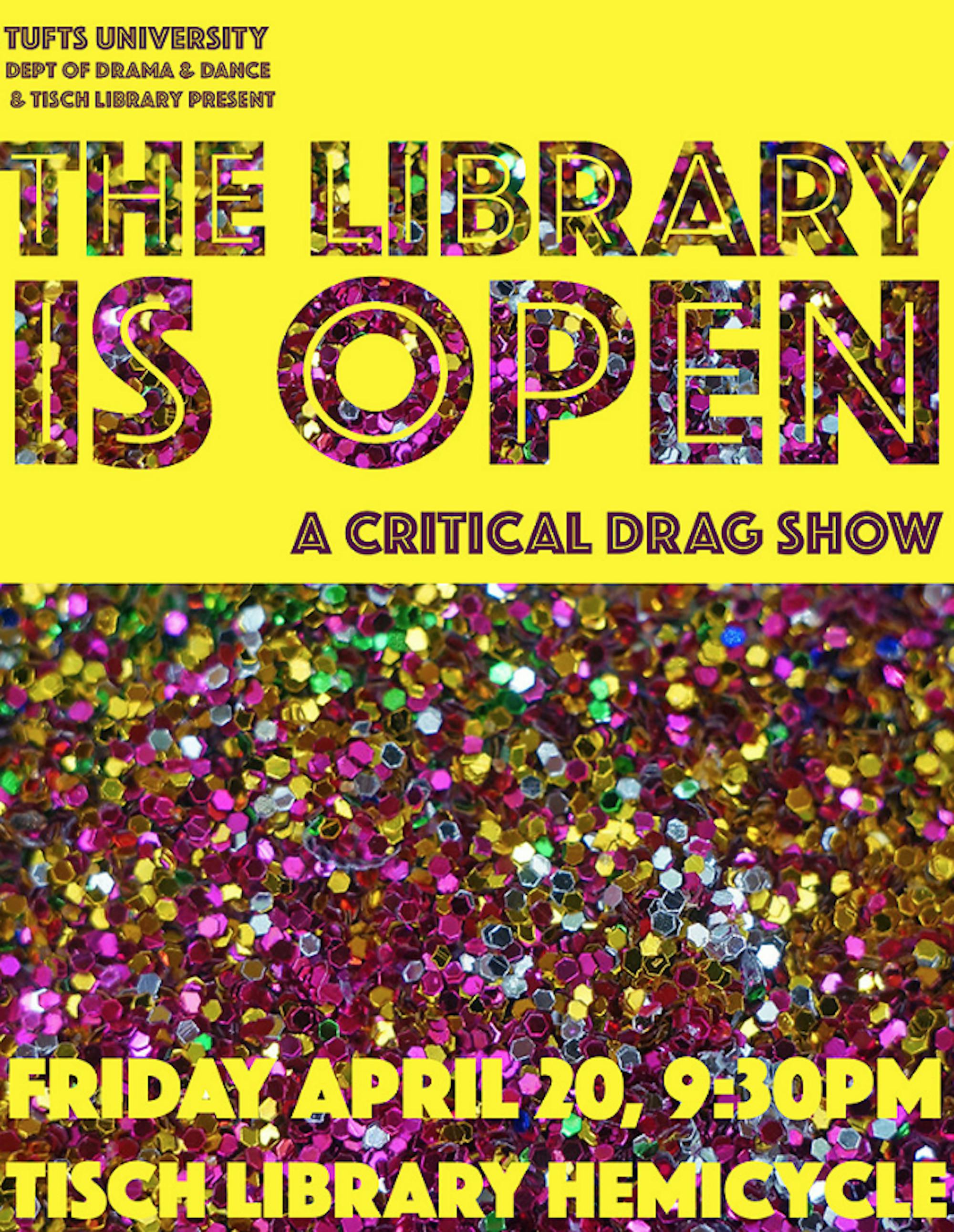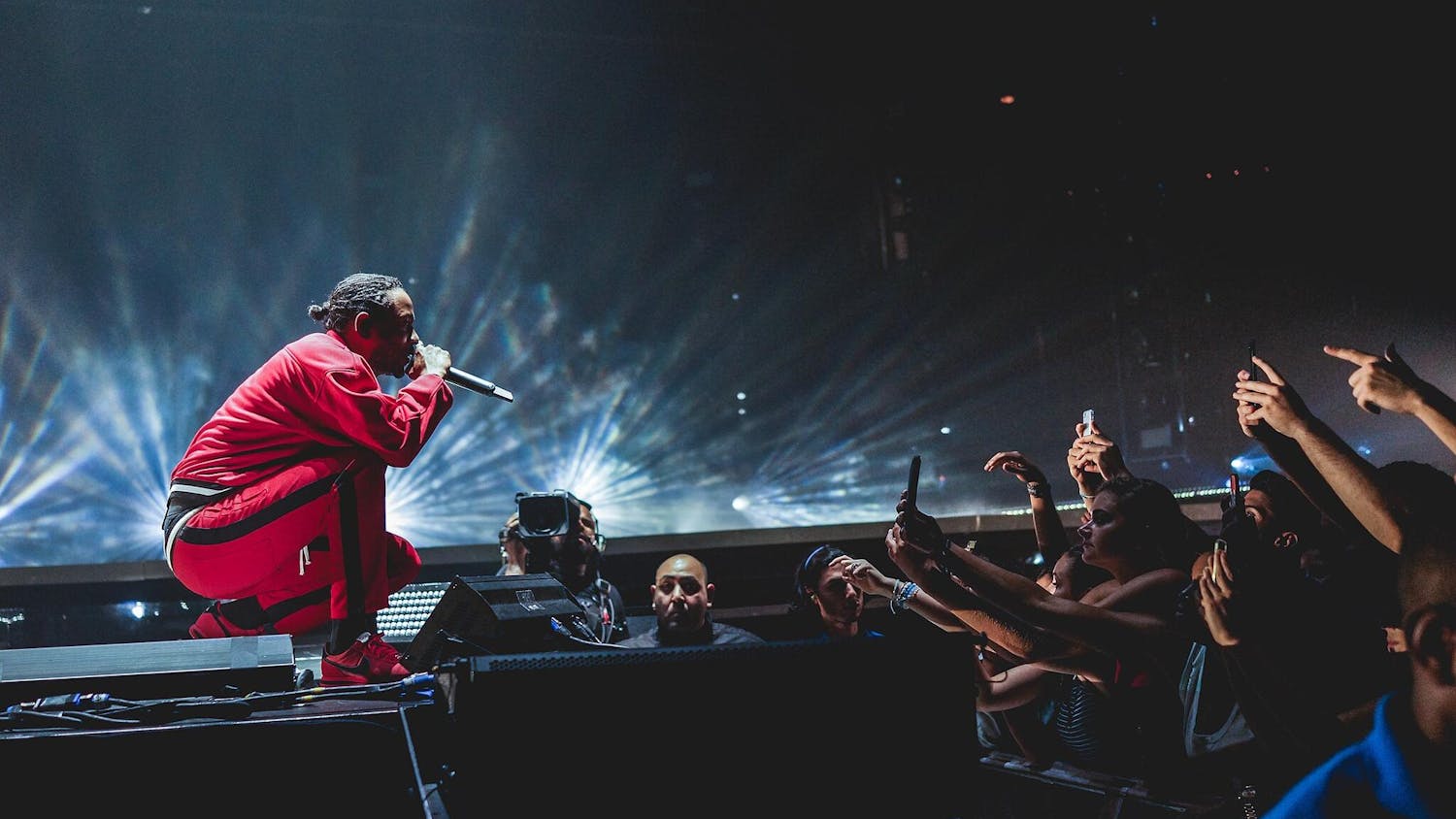How far have you gone to get an A? Tisch Library will be open next Friday night, as students of Kareem Khubchandani’s “Critical Drag” course will lip sync for their grade in front of friends, family, professors and maybe even President Anthony Monaco in the Tisch Library Hemicycle at 9:30 p.m. on April 20. Titled “The Library is Open: A Critical Drag Show,” the performance will be a “ball” in every sense of the word, featuring song, dance and story that will bring both raucous fun and a critical appreciation of drag to audiences of all ages.
Friday’s performance will be the culmination of a semester of high-caliber, engaged student work in both a traditional and non-traditional pedagogical sense. In the class, learning was embodied academically by readings that provided theoretical frameworks to ground the students' performances. For senior and fan of “RuPaul’s Drag Race” (2009–) Lexi Galantino, Critical Drag has changed her understanding of drag, gender and performance.
“While some of us came in having performed drag, or as artists, most of us came in thinking, ‘I like "RuPaul's Drag Race;" I’m going to take this class on drag!’” Galantino said. “We did a lot of readings in the beginning on different types of intersectionality with drag and ideas on gender. I learned a lot about drag and feminism, what it means to be a cis-woman, how I can be a ‘queen’ or a ‘king’ or something in between, because drag is all about deconstructing, and then sort of ‘reconstructing,’ gender.”
The course has also taken a more immersive approach to learning, using actual stage space during class time. Members of the class refer to each other by respective drag names and personas, which they formulated during the first week and develop throughout the semester. First-year JP Documet elaborated on the process of creating his own persona: Anita Vahina.
“It was kind of hard to find footing in the beginning [with my drag persona],” Documet said. “I knew she was playful, flirty and not the brightest. It wasn't until the third week where she owned it and started to have more fun with it and become herself more fully. She's also very high-energy in her performances and shows a lot of emotion. She likes doing splits.”
First-yearJuan Gasca Banda came to the class as both a fan of “RuPaul’s Drag Race” and as a drag artist himself. Despite his prior knowledge in the art of drag, Gasca Banda learned a lot about himself in and out of drag through readings, exercises and guidance from classmates and Khubchandani.
“We did all these exercises aimed to really feel the character and embody its presence,” Gasca Banda said. “[Khubchandani] started us off with an exercise where we all got in a circle and talked about how certain movements might portray a certain gender. For example, putting your hand on your hip might be read as feminine, whereas taking up a lot of space might be read as masculine. We practiced all of these masculine and feminine movements and choreographed them into a dance.”
But beyond learning through more conventional methods, a supportive classroom environment also helped students learn about the art of drag and become comfortable performing, all while building relationships and celebrating each other’s personal growth. For Chilean exchange student Sofia Gonzalez, the prospect of performing, especially in a space as public as Tisch Library, was a bit intimidating. But, as “crafty witch” Malady Messer, Gonzalez’s drag persona, performing came a bit easier with the support of the class.
“It's a really good environment where you can be honest and say, ‘You know, I think you should try practicing this more,’ and if you really like something, encourage people,” Gonzalez said. “We get so fired up watching each other. You can hear screams, clapping. It's just so fun. They give me confidence, and normally I'm not really confident. I worry a lot before performance assignments, but once I'm there, they are so supportive. They make me believe in myself. I'm really proud of what we've achieved as a class and individually.”
Chair of the Department of Drama and Dance and guest judge during one of Critical Drag’s class sessions, Heather Nathans emphasized the importance of the course as a critical space for students to explore and address issues of representation, gender and sexuality. With courses like “Sew-cial Activism,” a costume course offered last fall that explored the role of dress and costume in negotiating gender and sexuality, and professors like Khubchandani and Laurence Senelick incorporating critical research in performance classes, Nathans hopes that the department can continue to provide students opportunities to learn and grow.
“It's vital that the department offer classes on drag, as well as gender and sexuality studies in theatre as part of our mission to embrace the widest possible definitions of what constitutes performance,” Nathans said. “It's about creating an environment in which a diverse range of communities can see themselves reflected onstage and in what we study in the classroom.”
Khubchandani often finds himself at this intersection of different forms of knowledge in performance and gender and sexuality studies. As Assistant Professor in both the Department of Drama and Dance and the Program in Women's, Gender, and Sexuality Studies and a drag artist himself, Khubchandani sees Friday night’s venue choice as an exciting opportunity to bring his students' work full circle.
“To me, as a scholar, the library is the center of the campus,” he said. “It’s the site of knowledge. Everything we do passes through the library … To me, the fact that it's happening there means that it's happening in the center of our campus, metaphorically and even physically. So I'm really grateful to them for making that happen.”
For Gasca Banda, the venue for Friday night’s performance is an exciting prospect that embodies drag’s potential as a means of self-growth.
“By making it so public that your friends, professors and even Anthony Monaco might show up, it pushes you to cross so many boundaries that you were often so afraid to cross,” Gasca Banda said. “I think that's an important part of drag and the class as a whole.”
After a semester spent working with guest artists from the Boston area, dissecting critical texts in the classroom and lip sync battling on the stage, excitement is running high for students with one last chance to show their stuff next Friday evening. For next week’s performance, Documet plans on taking his drag persona to a whole new level.
“With my final performance, I'm trying to tell a full multifaceted story, all in a two and a half minute performance,” Documet said. It gets into a deeper level of Anita [Vahina] that the class hasn't really seen yet where it goes into her emotions more [than] any other performance in the past has. I'm really excited to see where that goes.”
Gasca Banda echoed Documet’s enthusiasm for the class’ final performance.
“I guess I'm just really excited to gag all my friends,” Gasca Banda said. “There's so much talent in the room, and I'm so excited for everyone to be able to experience this class with us. It's a little gift from us to you guys.”
Tisch Library set to open next Friday night to 'Critical Drag' lip sync extravaganza

A promotional image for "The Library is Open: A Critical Drag Show" is pictured.





